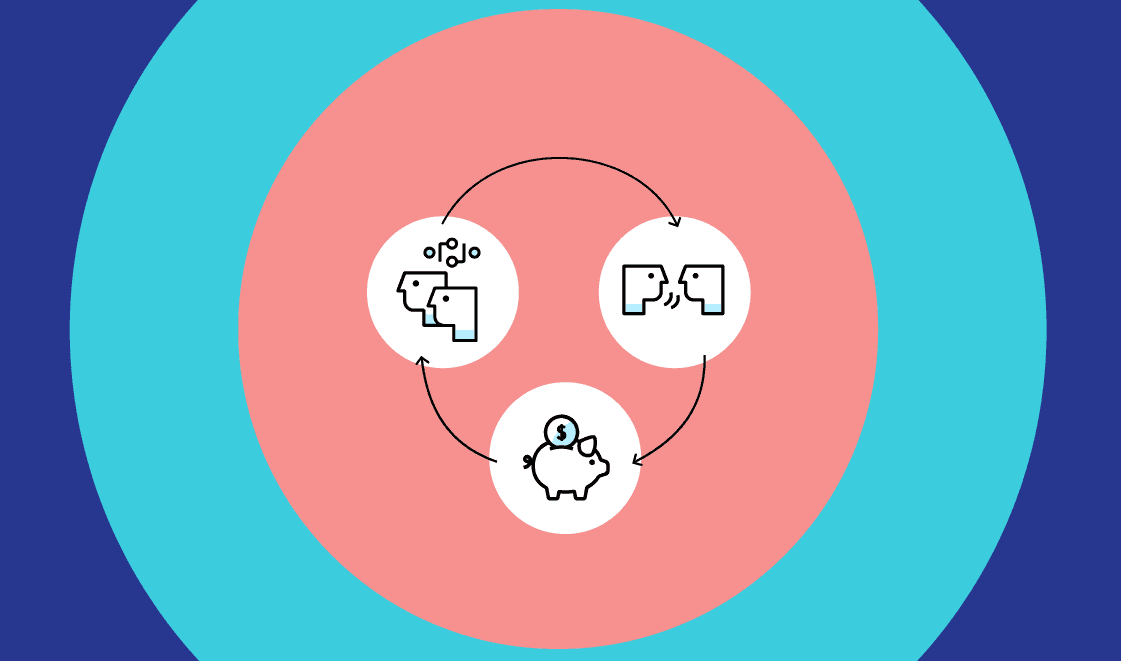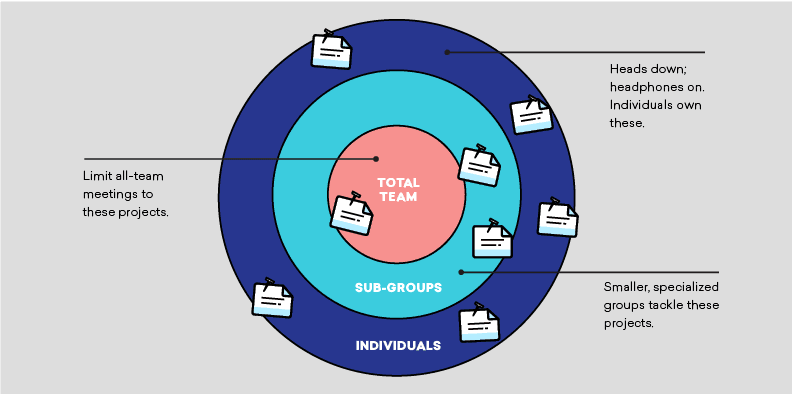Collaboration and the Customer Experience
Published on July 18, 2018/Last edited on July 18, 2018/6 min read

Carlos Valdes-Dapena
AuthorCarlos Valdes-Dapena, author of Lessons from Mars: How One Global Company Cracked the Code on High Performance Collaboration and Teamwork, gives Braze his take on the role of collaboration in creating seamless customer experiences.Whether you run a business as I do, or you draw a paycheck, one thing holds true: customers are the lifeblood of your organization. Without them, you’ve got nothing. This makes engaging those customers crucial to the success of your business. Lucky for us, we live in the age of customer engagement technology! We’re able to compile customer data in real time, spot trends, harvest insights, target promotions with laser precision, and to test to make sure our messaging is resonating with customers. With all these technologies at hand, customers can enjoy a seamless experience—the perfect blend of service and support.
Except, that is, when they don’t, and that happens far too often.
Broken, “seam-forward,” customer experiences aren’t necessarily the product of bad technology. Sure, some platforms are better than others, they’ve got their pros and cons, but overall, they’re pretty solid when used correctly. Nor can we blame such experiences on companies not wanting to keep customers engaged and happy; most of the people I know who deal with customers day-to-day try their best to provide that seamless experience. Still, most of us have a story about when we were the customer and some outfit we were dealing with dropped the ball, big time. “If only their right hand knew what the left hand was doing,” you’ve probably said to yourself, “it would have been fine.” Instead, we’re left disappointed and inclined to spend our dollars elsewhere next time.
What’s going on here? The problem isn’t one of technology or intention. It’s a problem with collaboration. These tools aren’t just “set it and forget it.” You need humans working cohesively together to make the most of them.
The problem isn’t one of technology or intention. It’s a problem with collaboration. These tools aren’t just “set it and forget it.” You need humans working cohesively together to make the most of them.
Not long ago a colleague of mine, Kim, booked a family trip to the Bahamas through an online travel service. We’ll call them TravGuys.com. Unfortunately, things got complicated and the trip had to be called off. Kim phoned TravGuys customer service and cancelled the trip. Travguys issued her a credit for future travel, she thanked them and ended the call. So far, seamless.
Not long afterwards—in fact, on the very date of the once-planned trip to the Bahamas—Kim went back to the Travguys site to use her credit to visit a friend in Chicago. When she logged into her profile, the system informed her that she was, much to her dismay, on a plane to the Bahamas. She wasn’t, of course. She was at home at her kitchen table, her heart beating faster than she’d have liked. Had they somehow botched her cancellation? Did she not have that credit she was counting on? She picked up her phone and called the TravGuys 1-800 number. It turns out that everything was fine. The cancellation had gone through, she had her credit and she booked her Chicago trip. For some reason, even though the system contained her data, the previous transactions hadn’t been linked. Seams were starting to appear. Then, the following Monday while in Chicago, Kim got a text alert from TravGuys: “It’s time to check in for your flight home from… the Bahamas!” Wait, what? Now it was all about the seams.
Remember this: the seamlessness that customers expect is an illusion, a deft act of organizational legerdemain. Organizations, no matter how flat, have seams. There are necessary and helpful distinctions between certain groups that are worth sustaining. Yet, the seamlessness show must go on. And that essential illusion of seamlessness requires constant collaborative effort.
In Kim’s case, the customer service team, the web team, and the mobile team, despite having access to her customer data in their system, were out of sync—not seamless where it mattered. These teams aren’t alone in this; it happens every day. Unfortunately, customers aren’t forgiving. They vote with their feet and walk away.
Companies are aware of these failures of collaboration and often attempt to respond and create change. You may have been a part of a townhall where leaders extolled the value of teamwork. They may have run training classes on collaboration and put up posters proclaiming the virtues and necessity of working together. They installed collaboration software. Everybody got the message, and still nothing changed. Why?
Whether it’s person-to-person interactions or teams working with teams, most organizations misunderstand what is required to ignite and sustain collaboration. These misunderstandings mean that customers like Kim continue to have “seam-forward” experiences. The most common flawed assumption is that collaboration is created through having a particular mindset or attitude. Think about off-site team building programs. They’re intended to foster an appreciation for the importance of collaboration. Sure, attitudes and mindset matter. But our people are smart; they get how important collaboration is. Most of them don’t need an attitude adjustment; what they do need is clarity.

Here’s a liberating piece of news: Despite what the ubiquitous teamwork posters suggest, and what the silly team building exercises reinforce, not everything needs collaboration and not everyone needs to be a good team player all the time. Collaboration—knitting together the seams that always exist between teams—is simply one option for getting work done. It’s more expensive than working alone, however, more complex and more prone to errors. That’s why it’s important to establish clarity about which tasks truly require collaboration, the ones where the payoff will exceed the inherent risks. Interactions with your customers usually meet this qualification
So, collaboration is a choice, not a universal mandate. Once chosen, though, you must get it right. What do teams need to get it right? Clarity. Clarity about:
- Which tasks require collaboration
- Which don’t and
- Who specifically will do the work and with whom
The distinction between #1 and #2 is paramount. Focus your collaborative efforts only on the highest impact initiatives, those essential to delivering a (seemingly) seamless customer experience. For example, one seam Kim encountered was between her web-based cancellation and the mobile messaging process. The collaboration between those teams needs work.
What about tasks that don’t require collaboration? Put those into the hands of motivated, capable individuals. Then make sure you attend to #3—get the right people working together on the things that matter most to customers.
Seamlessness is a pleasing deception we conjure so that our organizations feel accessible, reliable and easy to work with. Achieving and maintaining it depends in large part on understanding what actually makes collaboration work. It’s all about choosing it and using it only where it matters most—on the tasks and interactions that are part of your customer’s experience. So tear down the posters, reconsider your next team-building event and start collaborating in ways that matter to those your all-important customers.

Exclusively for Braze: Access the full breakdown of the Radar Screen exercise, excerpted from the book, here!
Be Absolutely Engaging.™
Sign up for regular updates from Braze.
Related Content
View the Blog
The new inbox reality: How iOS changes are reshaping email marketing

Aparna Prasad

Experience optimization: Turning data insights into better journeys

Team Braze

December 2025 Bonfire Marketer of the Month: Jagex’s Emma Oliver
